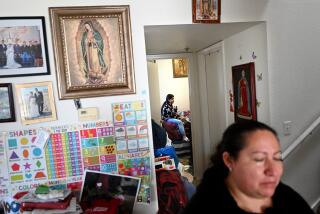How I Made It: Modesto farmer has blossomed into a tulip peddler

- Share via
The gig: John “Farmer John” Bos, 44, is owner-operator of Dutch Hollow Farms, an agri-tourism business on 65 acres on the northern edge of Modesto, across from a Best Buy and a Home Depot. He runs a popular pumpkin patch in the fall. In spring, he defies the scorching heat of the Central Valley to grow thousands of tulips for public picking. In a decade, his business has grown from “beer money” to about $300,000 in annual sales.
The accidental entrepreneur: Tired of working at the dairy owned by his father, also named John, the younger Bos struck out on his own, leasing land around Modesto until he found a plot at Claribel and Oakdale roads, a busy intersection. “I wanted to farm this place, but I had no clue how big this pumpkin and flower thing would become.”
Imagination and determination: “It’s a dreamer’s mentality, but yet it’s that whole Dutch determination thing. I did not have my heart in that dairy. I worked hard there, but I wanted to do the next thing that was going to blow the public away. I think I found that.”
Tip-toeing into tulips: His mother, Alice Bos, 77, a native of the southern Netherlands, grew tulips despite the heat. “I was on the driveway and we were shooting the breeze and I saw these big Pink Impression tulips. I said, ‘Hey, Mom, those are nice.’ She says to me: ‘Vy don’t you grow yourself cut flower?’ … I purchased 200 bulbs that fall.
“I was growing them on my dad’s place. Each year I grew more and more. The first five or six years, I was just giving them to my friends. It was a fun study. You found out what worked here in the valley and what didn’t.”
The trick: Tulip bulbs need to be kept cold during a long winter dormancy. In the U.S., most are grown in hot houses. West Coast production is concentrated in Washington, Oregon and California’s northern coast, including Arcata, where Sun Valley Group is based. Bos buys about 200,000 bulbs from the Netherlands each year, at a cost of $40,000, and has them cooled in Michigan before shipping them west in November. “When they come out here, it’s like: boom. They grow quickly. Right now, they think it’s spring. All my tulips are done by April 1.”
Worst season: Thinking he had a wholesale contract locked up, he invested $100,000 in bulbs six years ago, only to have the deal fall through after the flowers bloomed. He discovered the public loved the carpet of flowers, but most of the crop never got picked. He’ll never go back to wholesale. “It’s one thing if you do millions at that, but not at 100,000. You can’t make it work. It’s not viable. Plus, this is unique to this area. Nobody is doing what I do.”
Hope springs eternal: Bos has planted 140,000 tulips in about 100 varieties on a five-acre corner of his property. They’re arranged in concentric circles shaped like a peace sign, surrounded by grape hyacinth that will make it look like it’s floating on an ocean. He’ll charge $5 entry, which comes with five stems. After that, they’re $1 apiece. In May, he’ll hold a 10-year anniversary party for customers. He hopes to buy his own land in three years.
Twitter @LATgeoffmohan
More to Read
Inside the business of entertainment
The Wide Shot brings you news, analysis and insights on everything from streaming wars to production — and what it all means for the future.
You may occasionally receive promotional content from the Los Angeles Times.











